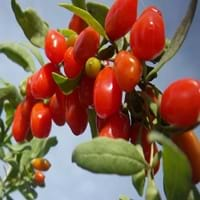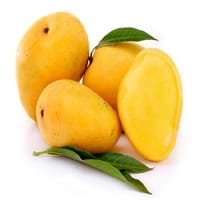Health Benefits
Anti-oxidant properties, Eye care, Helps in cartilage regeneration, Regulates Blood Sugar, Treatment of osteoarthritis
Cancer prevention, Cures fatigue, Heart care, Prevents strokes
General Benefits
Boosts immune system, Digestive aid
Anti oxidant properties, Boosts immune system, Controls blood pressure, Digestive aid, Improves eye vision, Maintains healthy cholesterol level
Skin Benefits
Anti-aging benefits, Reduces wrinkles, Treatment of skin diseases
Anti-aging benefits, Brightens and lightens complexion, Skin cleansing, Skin rejuvenation, Treatment of acne, Treatment of blackheads, Treatment of dark spots
Hair Benefits
Protects hair, Regulates hair growth
Good conditioner, Prevents hair loss, Treatment of dandruff
Allergy Symptoms
Anaphylaxis, Itching, Sneezing, Wheezing
Abdominal pains, Breathing difficulty, Diarrhea, Runny nose, Sneezing, Swelling of mouth, tongue or lips, Watery eyes
Side Effects
May interact with some drugs
Increase in blood sugar level, Diarrhoea, Weight gain
Best Time to Eat
Any time except an hour after meal, Don't consume at night and before bed
Don't consume at night and before bed, Eat the fresh ones, avoid mixing with any other foods, don't eat after meal., Morning time (before lunch)
Vitamin B5 (Pantothenic Acid)
Vitamin C (Ascorbic Acid)
Vitamin K (Phyllochinone)
Phytosterol
Not Available
Calories in Fresh Fruit with Peel
Not Available
Calories in Fresh Fruit without Peel
Not Available
Calories in Canned Form
Not Available
Season
Autumn
Spring, Summer
Varieties
No Types
Alphonso, Valencia Pride, Badami, Chaunsa, Nam Dok Mai, Glenn, Sindhri, Madame Francique, Kesar and Keitt
Color
Scarlet red
Orange, Red, Yellow
Inside Color
Orange
Yellow
Taste
Slightly bitter, Tart
Sweet
Origin
Unknown
Southern Asia
Soil Type
Well-drained
Clay, Loam, Sand
Climatic Conditions
Cold, Hot
Humid, Warm to hot climate
Facts about
- Study says a man named Li Qing Yuen used to eat goji berries daily and lived for 252 years.
- They are also known as wolfberries in India & China.
- This fruit is used for spiritual purposes at many places.
- A mango tree can bear fruits even after the age of 300 years.
- Height of a mango tree can be as high as 100 feet.
- In India, mango is known as a symbol of love. Also, a mango basket is considered as the sign of friendship.
Other Countries
Canada, France, India, United States of America
Bangladesh, Brazil, China, Indonesia, Mexico, Nigeria, Pakistan, Philippines, Thailand
Top Importer
United States of America
United States of America
Top Exporter
China
Mexico
Botanical Name
Lycium barbarum
Mangifera Indica
Synonym
Wolfberry
Not Available
Subkingdom
Tracheobionta
Tracheobionta
Division
Unknown
Magnoliophyta
Class
Unknown
Magnoliopsida
Subclass
Asteridae
Rosidae
Order
Solanales
Sapindales
Family
Solanaceae
Anacardiaceae
Species
L. barbarum
M. indica
Generic Group
Not Available
Cashew
Difference Between Gojiberry and Mango
We might think that Gojiberry and Mango are similar with respect to nutritional value and health benefits. But the nutrient content of both fruits is different. Gojiberry and Mango Facts such as their taste, shape, color, and size are also distinct. The difference between Gojiberry and Mango is explained here.
The amount of calories in 100 gm of fresh Gojiberry and Mango with peel is 32.00 kcal and Not Available and the amount of calories without peel is Not Available and 60.00 kcal respectively. Thus, Gojiberry and Mango belong to Low Calorie Fruits and Low Calorie Fruits category.These fruits might or might not differ with respect to their scientific classification. The order of Gojiberry and Mango is Solanales and Sapindales respectively. Gojiberry belongs to Solanaceae family and Mango belongs to Anacardiaceae family. Gojiberry belongs to Lycium genus of L. barbarum species and Mango belongs to Mangifera genus of M. indica species. Beings plants, both fruits belong to Plantae Kingdom.









